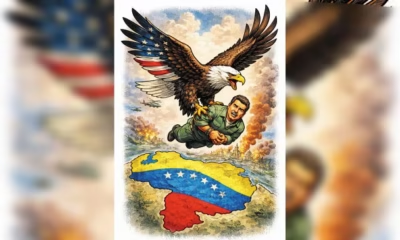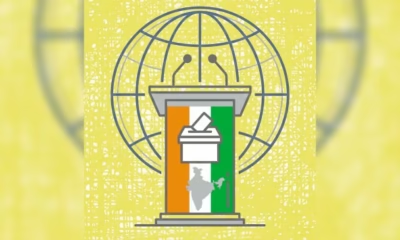
|
Getting your Trinity Audio player ready...
|
(The article was originally published in Indian Express on October 12, 2024 as a part of Dr Madhav’s column titled ‘Ram Rajya’. Views expressed are personal.)
Jammu and Kashmir’s electorate has returned the National Conference to power in the recently concluded elections by giving them 42 seats in the newly delimited 90-member legislative assembly. Its alliance partner, the Indian National Congress, secured just six seats. With several independents reportedly supporting the NC, the party is in a position to form a government with or without the Congress Party.
J&K is demographically and geographically diverse. While the 10 districts of the Kashmir Valley, which send 47 legislators to the UT legislature, are home to Kashmiri Muslims — both Sunni and Shia — Jammu’s 10 districts have a mixed population. Six of them are dominated by Hindu Dogras, while the other four, two in the Pir Panchal region and two in Chenab Valley, have dominant Muslim populations including Gujjars, Bakarwals and Paharis. Kashmiri Pandits and Sikhs constitute important segments of the population. All this makes J&K’s politics complicated.
The National Conference had dominated politics in both regions till the 1996 assembly elections. But things changed with the emergence of a competitor in the Kashmir Valley in early 2000s in the form of the People’s Democratic Party (PDP) led by Mufti Mohammad Sayeed. The last three elections to the state’s legislature — 2003, 2008 and 2014 — saw fragmented mandates which led to coalition governments.
The return of one-party dominance is the significant outcome of this election. The NC’s massive victory was attributed by several pundits to its demand for the restoration of Article 370. The party’s leader Omar Abdullah has emphatically argued that the mandate was a rejection of the Centre’s August 2019 decision. The data, however, shows that while the NC managed to win a large number of seats in the Valley, its overall vote share remained at the same level as in 2008, at around 23 per cent. Moreover, in several seats, the NC won due to the division of votes among parties like the People’s Conference, the Apni Party and the AIP — all branded as pro-Delhi. The bluff of the anti-Delhi theory was called by none other than Omar Abdullah himself, when, on the day of the results, he made a somersault by proclaiming that restoration of Article 370 was not a priority. Interestingly, nobody is protesting in the Valley, proving that there are no tears to be shed for Article 370 anymore.
For the BJP, this election proved another important milestone in its continuous rise in J&K politics. From a party with just one member in the legislative assembly in 2003, it has consistently grown in strength with every election and reached a high in this election winning 29 seats and securing the highest percentage of popular vote of around 26 per cent. It swept almost all the seats in the six Hindu majority districts, leaving the NC without any representation from the Jammu heartland. Omar Abdullah described the results as a rejection of the BJP. But what he overlooked was the rejection of NC by the entire Jammu region.
Some pundits sought to cynically misrepresent this verdict in communal terms. But the facts speak otherwise. This election was ultimately decided in the two districts of the Peer Panchal region — Poonch and Rajouri. Of the eight seats that fall under these districts, the BJP managed to win only one seat, leaving the remaining to NC and allies, giving rise to that speculation. But in the region dominated by Gujjar and Pahari communities, the BJP put up several prominent Muslim faces and secured a good vote share too, although not enough to win the seats. Going forward, the BJP needs to further strengthen its footprint in these districts to make it a pan-Jammu party.
There cannot be a better opportunity for the BJP than Prime Minister Modi’s leadership to rise as a pan-J&K party. The myth that the BJP is a Jammu party with no support in Kashmir Valley has been shattered in this election. The BJP candidate in Gurez constituency came very close to victory, losing by just a thousand odd votes to his NC rival. Unlike in the past, some BJP candidates in the Valley secured votes in several thousands indicating greater acceptance among the Valley’s voters. During the campaign too, thousands turned up to listen to BJP leaders indicating the changing mood in the Valley. Modi remains the most popular leader both in Jammu as well as in the Valley. While people in the Valley may hesitate to vote for the BJP, they openly praise the benefits accrued to them through Modi’s good governance in the UT in the last five years.
Congress entered J&K politics in the 1950s. But, after six decades, it still struggles to win even a couple of seats in the Valley on its own. The BJP may not take that long to find a strong foothold if it manages to promote good leadership.
Politics of separatism is on its last leg with the erstwhile separatists and those who used to boycott polls choosing elections as the means to pursue their politics. It is the greatest achievement of the Modi government and opens up genuine space for new politics in J&K. That politics should be inclusive and sensitive. There should be space for differing opinions without subjecting people to the patriotism test all the time. The BJP as the dominant opposition will be looking forward to working with the ruling establishment to build that politics of peace and development.
The new bipolar politics offers a golden opportunity to Omar Abdullah. So far, he has shown an inclination for a non-confrontationist approach with the Centre. He must appreciate that the BJP government took some tough decisions about J&K not because it hates the state but because it loves Kashmir. It will be willing to do everything possible to ensure good governance for the people. That includes granting statehood, provided the NC leadership is willing to take the state forward to 2047, and not backwards to pre-2019.




